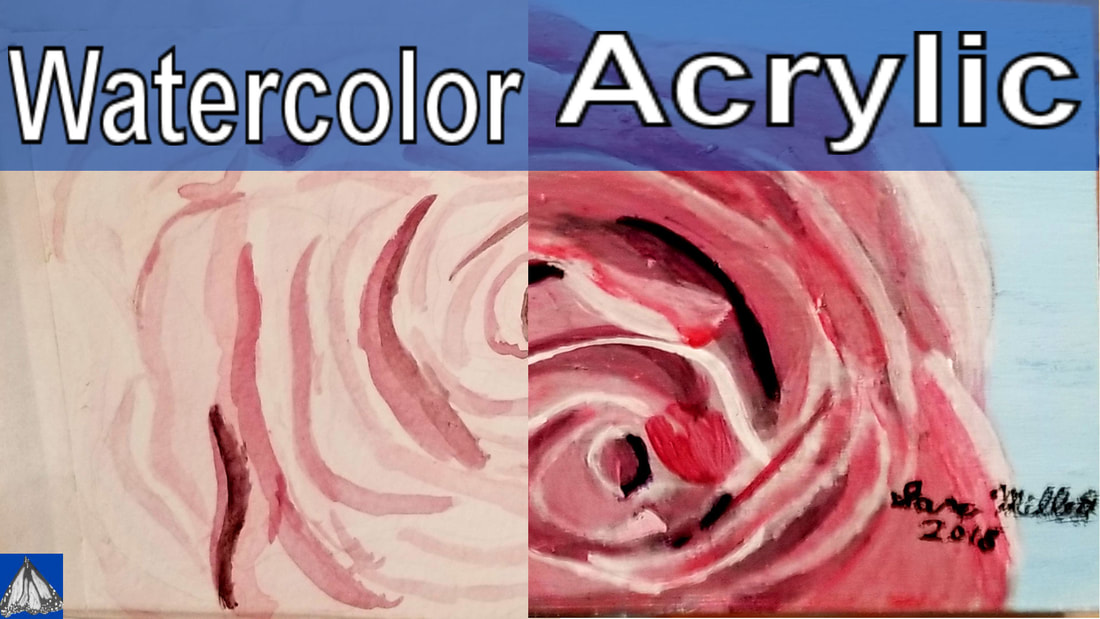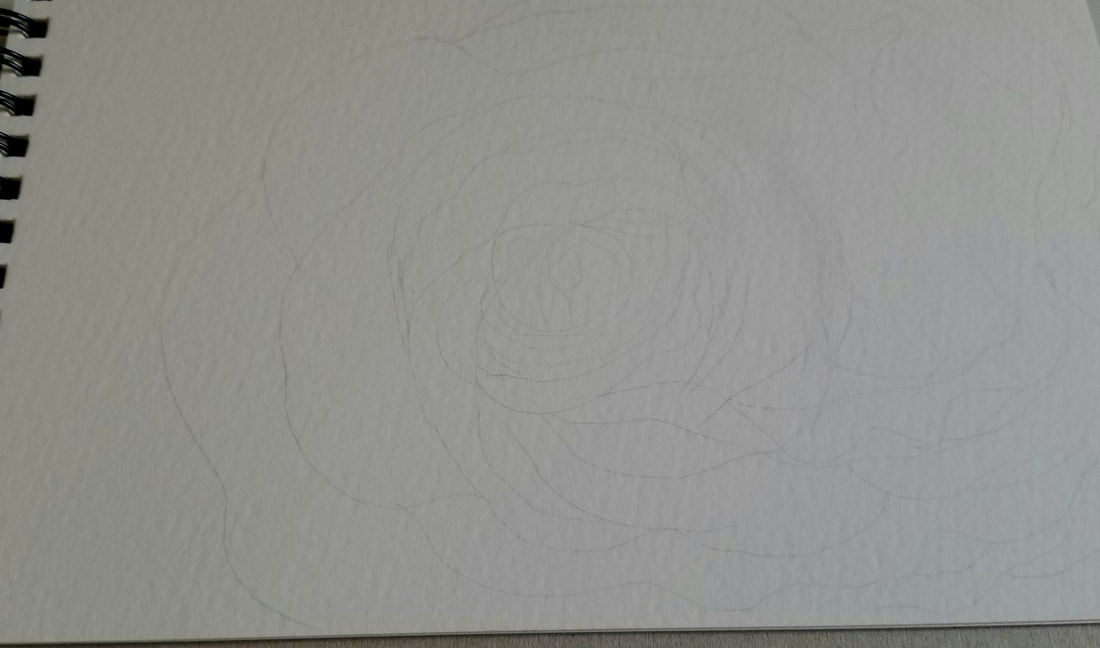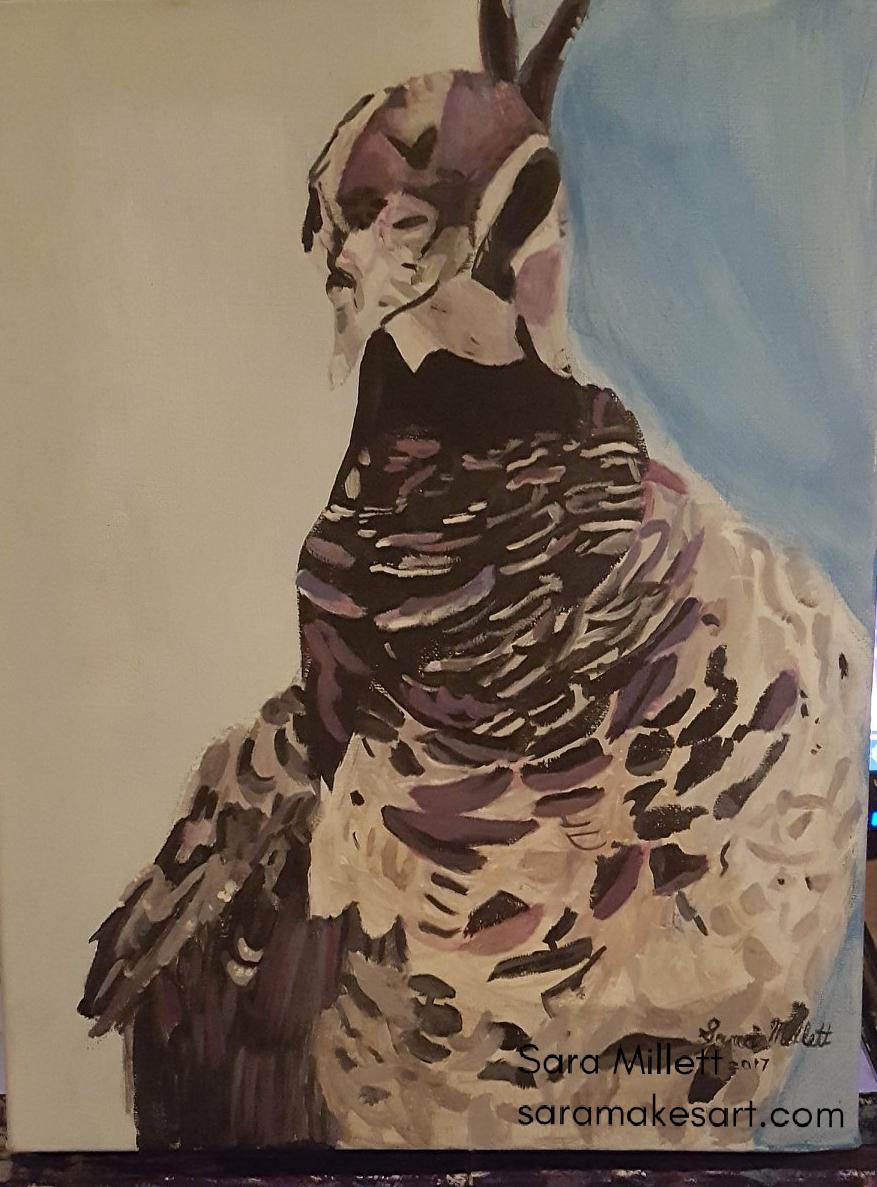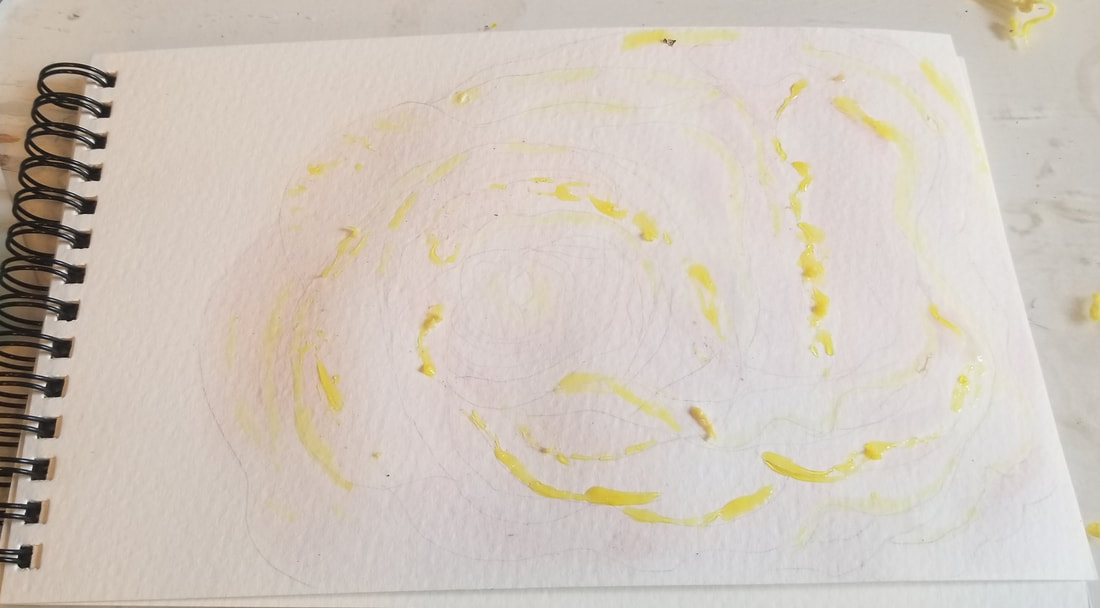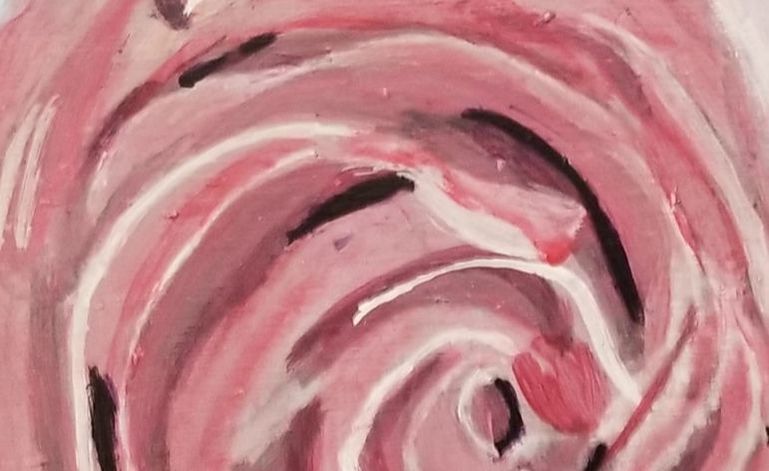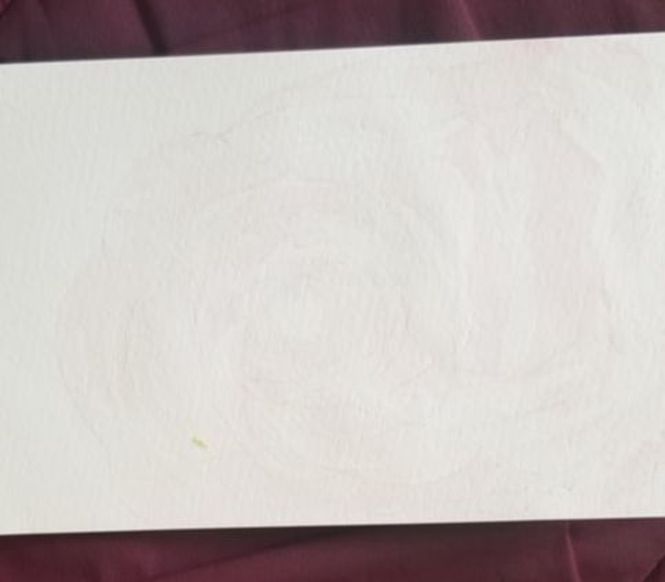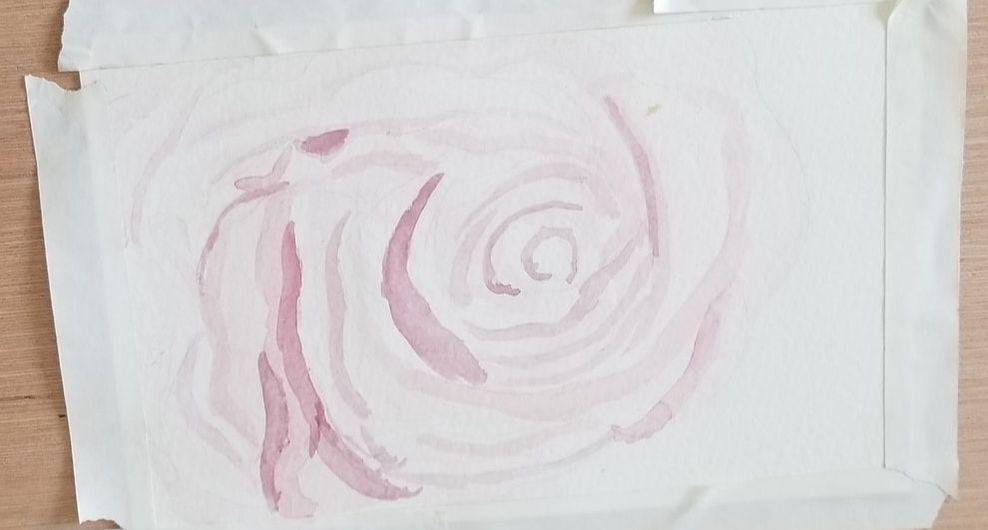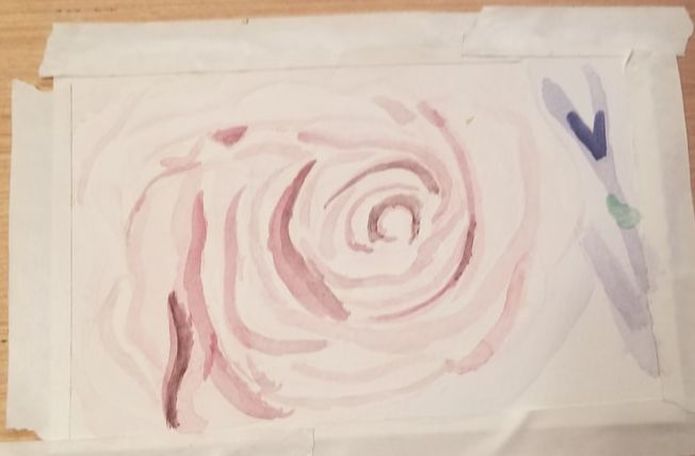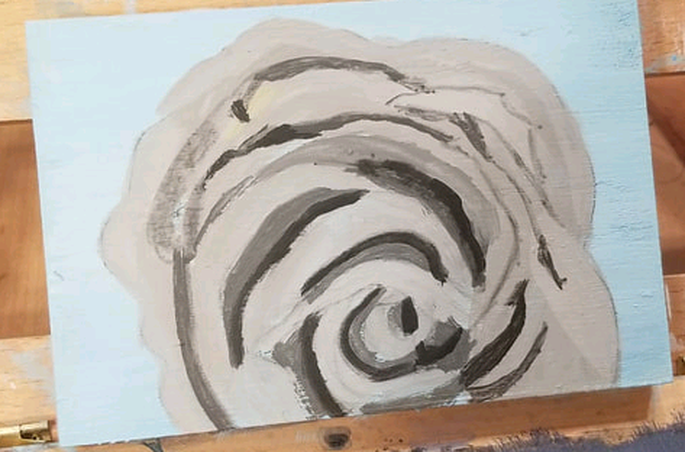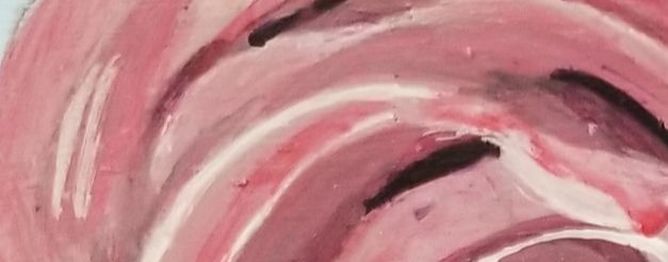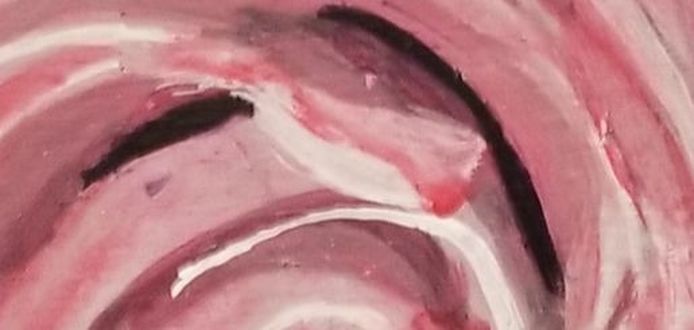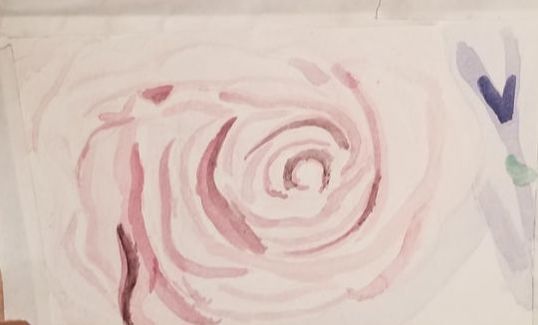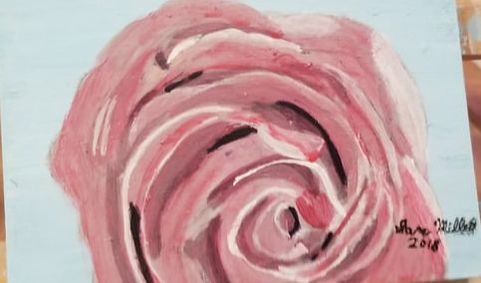|
The first difference between painting in watercolor and acrylic begins before I even start painting. When I work in watercolor, I draw in all my details with pencil before I start painting. This is because watercolor is transparent, so it's very hard to layer one color on top of another. It's impossible to layer a darker color over a lighter one in watercolor, period. Because of this, it's very important to have where I'm going to put all my shades mapped out, since if I put the wrong color down somewhere, I can't easily fix it, unlike acrylics. This brings me to... When working in acrylics on the other hand, I really just get the basic shape down before I start painting. Acrylic is opaque, unless you're glazing, which I'll get into in a bit, so you can easily layer colors over each other. I can even layer a lighter over a darker one in acrylic. So to have all my details drawn before I start painting is unnecessary and would really just create extra work for myself because I would need to worry about painting around all the details that I'd drawn. I'll give you an example of when trying to draw in all my details before I started painting in acrylics has created extra work for me. Take a look at this peacock I painted. 'See all the detail in his chest? Well, I meticulously drew in all of that before I started painting. Then I tried I tried to paint around it, realized it was slowing me down, so I ended painting over all the details and drawing them back in later. The next difference is in how we use white in both mediums. In watercolor, we normally don't use white. If a part of our piece is going to be white, we use the white of the paper. In the pic above, you can see a pale yellow liquid in various parts of my painting. This is called masking fluid. You don't have to use masking fluid when working in watercolor, but it offers extra insurance that you won't accidentally get paint on an area that you want to keep white, because it's impossible to get paint or water on an area that has masking fluid on it. When it comes to acrylics on the other hand, we add our whites in with white paint. When I work in acrylics, I'm not that concerned with the cleanliness of my water. I can go days or weeks without replacing my water and won't effect the quality of my painting. Not so with watercolor. If the water is dirty when I work in watercolor, that will muddy up the paint I'm using. So I always make sure to keep my water as clean as possible. Something interesting happened in this painting session, though. I'd intended to apply a layer of clear water to my paper and put paint over it. This is called painting wet-on-wet. Now, earlier, I'd used my brush to mix some water into some red that was already on my palette and, while I did clean the brush, it turned out there was still some residual paint on it which got in my water and actually turned it into the perfect light pink color. There's one of those happy accidents for you. I think this is a good time to mention that I chose to paint a pink rose, rather than a red one for this project, specifically so I could show you the difference in how we lighten colors between the two mediums. Like I said, when we work in watercolor, we really don't use white. If we want something to be white in our piece, we use the white of the paper and if we want our paint to be lighter, we lighten it with water. The "pink" you see in this rose, is actually red paint mixed with a lot of water. Now it's time to add shadows and for the watercolor painting, I just used the same red that I used for my base color, just with less water in it. When I put my first stroke of this paint down, I actually thought it was too dark, so I just mixed water into it and it lightened it right up. That's the cool thing about watercolor. Even after it's dry, you can reactivate it with water, both on your palette and on your paper. For the pink in this painting, I was using red that I still had left over from when I did my cat painting. Here's my watercolor version of the rose finished. In the photo, there was obviously some very dark tones. They looked black to be completely honest, but I chose not to use black in my painting because I thought doing so would ruin the soft, airy effect I wanted the piece to have. Instead, I just mixed black into the purple that I'd already used to darken it a little. You can see that there's a shape in the background. An important thing to remember when working watercolor is that if you want to be able to put a brush stroke down and have the paint stay where you put it, the paint underneath needs to be dry. If there's moisture around, whether it's wet paint, or just water, watercolor paint will move all over the place. A lot of times I take advantage of this thing about the nature of watercolor, such as when I blocked in the base color for the background. I wetted my entire paper except for one corner that I didn't want paint on and let my paint run all over where my water was. I think it can actually be a lot of fun to paint like this and you can get some cool effects painting wet-on-wet. But, it's annoying when this running and bleeding happens unintentionally. You'll notice that when I did the acrylic version of this rose, I started with a gray toned underpainting called a grisaille. I go over how and how do to a grisaille in this video. I chose not to use this method for the watercolor version, because I don't really know how the grisaille method would work with watercolor, but I would like to experiment with the grisaille method in watercolor in the future. After I'd put in my shading, I thought I was done, until I realized I was forgetting the white highlights, which is a very important part of the piece. But then after those were in, it still didn't pop the way I wanted it to, so I thought I needed more red shadows. Actually, it had bothering me for awhile how dull this rose was looking, so I thought a glaze of red was just what it needed to brighten it up. After that I was so much happier with it. But I still didn't feel like the petals had enough dimension. I decided that the purple shadows just weren't dark enough. I needed to go all the way to black. Which I did, and then glazed over with purple so it wouldn't look flat. All in all, when I compare the two paintings side by side, I really prefer the acrylic one. I think the colors are more vibrant and I really like what adding that little touch of black did for the folds in the rose. I didn't spend as much time on the watercolor version of this painting and part of that was because I've only recently started to use watercolor after years of not using it, so I'm not as confident in working in it as I am in acrylics. So I didn't want to try techniques like grisaille, or glazing, which I did with the acrylic painting, just because I didn't know how well they would come out. I wanted to stick with what I understood, because I wanted this to be a straight up tutorial and not one of those I'm-just-trying-this-out posts I sometimes do. Not I don't love doing those, by the way. So I hope this post has helped you understand better how I work in watercolor vs how I work in acrylics.
2 Comments
Maria
8/2/2019 02:49:16 pm
Great information really enjoyed the site
Reply
Your comment will be posted after it is approved.
Leave a Reply. |
Sara MillettPainter of portraits and wildlife Archives
November 2023
Categories
All
|
